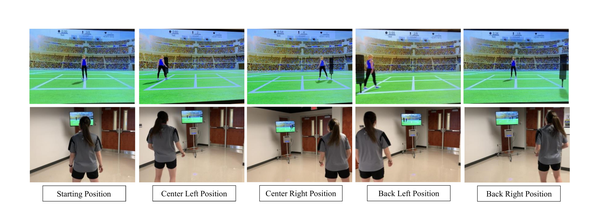-
Home
-
About JCTR
-
Gold Open Access
-
Issues
-
Editorial board
-
Author guidelines
-
Publication fees
-
Online first
-
Special issues
-
News
-
Publication ethics
-
Partners
-
Submit your manuscript
-
Submit your review report
-
Editorial Office
-

This work is licensed under a Creative Commons Attribution-NonCommercial 4.0 International License. ISSN print: 2382-6533 ISSN online: 2424-810X
Volume 7 Issue 1
Reliability and concurrent validity of TRAZER compared to three-dimensional motion capture
Jennifer A. Hogg*, Lynette M. Carlson, Abigail J. Rogers, Mason W. Briles, Shellie N. Acocello, Gary B. Wilkerson
Hogg et al. J Clin Transl Res 2021; 7(1):13
Published online: February 25, 2021
Abstract
Background. Efficient neural processing of visuospatial and proprioceptive input appears to be crucial for avoidance of sport injury. As such, clinically-feasible tests are needed to identify deficiencies found by advanced neuroimaging and electrophysiological tests. Three-dimensional motion capture in a laboratory setting is currently the gold standard for measurement of human movement parameters but is costly and requires extensive training. Non-immersive virtual reality systems with body motion tracking, such as TRAZER, may provide a clinically-feasible and portable means of acquiring similar variables. Test-retest reliability and concurrent validity of these systems is currently lacking.
Aim. To assess the concurrent validity of the TRAZER single-camera system with 3D motion capture system and to assess the test-retest reliability of TRAZER’s whole-body reactive agility metrics.
Methods. Participants: For validity, 13 healthy individuals (24.8 ±3.1 yrs, 170.0 ±7.7 cm, 70.0 ±14.2 kg); for reliability, 18 healthy individuals (23.3 ±2.5 yrs, 168.2 ±11.2 cm, 78.2 ±17.8 kg). Design: Validity was a single-session cross-sectional study. Reliability was a three consecutive day test-retest study. Setting: Controlled laboratory study. Intervention: Assessments utilized randomized movements in eight directions for forty total repetitions as designated by the TRAZER system. TRAZER protocol was simultaneously tracked by Vicon Motion Capture and the TRAZER system. Reliability data were captured on three consecutive days by the TRAZER system. Main Outcome Measures: Maximum acceleration, maximum velocity, and total distance were recorded for validation. In addition to these measures, maximum deceleration, average velocity, average acceleration, average deceleration, and average reaction time were collected for reliability.
Results. Overall, a lack of agreement exists between maximum outputs for TRAZER and 3D motion capture (velocity r =.808, acceleration r = -.090) but total distance correlation was high (r =.961). ICC values between days 1-2-3 for average measures were high (average velocity =.847, average acceleration=.919, average deceleration =.948) with the exception of average reaction time being fair (ICC =.536). ICCs for maximum measures showed a much smaller correlation between days (velocity =.654, acceleration =.171, deceleration =.416).
Conclusions. Even though there is a lack of strong concurrent validity between measures obtained from TRAZER and 3D motion capture systems, there is strong test-retest reliability of the TRAZER system. The applicability of these findings makes TRAZER clinically relevant in scenarios requiring pre and post-testing for return to play decisions, or monitoring of a training regimen where demonstration of validation to a gold standard measurement is not relevant.
Relevance for patients. When test-retest capability is desired, such as in return-to-play protocols following an injury, Trazer is a reliable option.

DOI:http://dx.doi.org/10.18053/jctres.07.202101.013
Author affiliation
1. Department of Health and Human Performance, The University of Tennessee Chattanooga, Chattanooga, TN, USA
2. Sports Medicine and Performance Department, Michigan State University, East Lansing, MI, USA
3. Emory Sports Medicine Center, Emory Healthcare, Atlanta, GA, USA
*Corresponding author
Jennifer A. Hogg
Department of Health and Human Performance, The University of Tennessee Chattanooga, Chattanooga, TN, USA
Email: jennifer-hogg@utc.edu
Handling editor:
Michal Heger
Department of Pharmaceutics, Utrecht University, the Netherlands
Department of Pharmaceutics, Jiaxing University Medical College, Zhejiang, China

